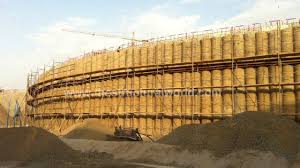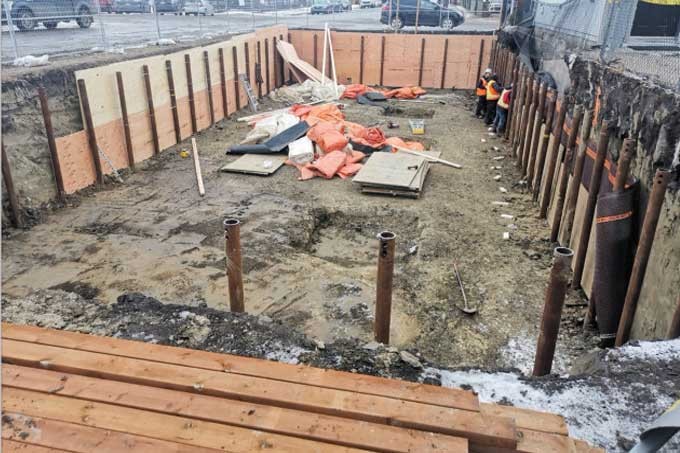Discover the key types of shoring and how they bolster structural integrity in construction projects, from excavation to emergency scenarios. Structural support plays a pivotal role in construction projects, ensuring the safety and stability of buildings during various stages of construction. Among the myriad methods of structural support, shoring stands out as a critical technique. Shoring involves the use of temporary supports to prevent soil movement, provide stability to existing structures, and ensure worker safety. In this blog post, we’ll explore different types of shoring and their applications in construction projects.
Contents
Types of Shoring:
Timber Shoring:
Timber shoring, also known as wood shoring, is one of the oldest and most traditional forms of shoring. It involves the use of wooden beams, planks, and shores to support excavations, trenches, and structures. Timber shoring is relatively economical and easy to install, making it suitable for small-scale projects and temporary applications. However, it may not provide sufficient strength for larger or more complex structures.
Hydraulic Shoring:
Hydraulic shoring utilizes hydraulic cylinders and steel plates to support trench walls and excavations. This type of shoring offers adjustable support, allowing for precise positioning and quick installation. Hydraulic shoring is commonly used in urban environments where space is limited and excavation depths are shallow. It provides greater stability and safety compared to timber shoring, making it suitable for medium to large-scale projects.

Aluminum Shoring:
Aluminum shoring consists of lightweight aluminum panels and struts that are assembled to form a structural support system. This type of shoring is highly versatile and can be used for a wide range of applications, including trenching, excavation, and structural reinforcement. Aluminum shoring is corrosion-resistant, durable, and easy to handle, making it ideal for long-term projects and challenging environments.
Steel Shoring:
Steel shoring involves the use of steel beams, frames, and props to support heavy loads and provide structural stability. Steel shoring systems are designed to withstand high pressures and loads, making them suitable for deep excavations and large-scale construction projects. Steel shoring is often used in conjunction with other support methods, such as concrete reinforcement, to ensure maximum strength and stability.
Applications of Shoring:
Excavation and Trenching:
Shoring is commonly used in excavation and trenching projects to prevent soil collapse, protect workers, and maintain the integrity of adjacent structures. Hydraulic shoring and aluminum shoring are particularly well-suited for these applications due to their flexibility, strength, and ease of installation. Trenching involves digging long, narrow excavations in the ground, typically for laying pipes, cables, or foundations.
Building Construction:
During building construction, shoring may be required to support concrete formwork, temporary structures, and existing buildings undergoing renovation or expansion. Steel shoring systems are often used in high-rise construction projects to provide vertical support and lateral stability.
Infrastructure Projects:
Infrastructure projects, such as bridges, tunnels, and pipelines, often require specialized shoring solutions to support excavations, tunnels, and underground structures. Timber shoring and hydraulic shoring are commonly used in these applications, depending on the specific requirements and site conditions.
Emergency Situations:
Shoring can also be deployed in emergency situations, such as natural disasters or structural failures, to stabilize buildings and prevent further collapse. Quick and efficient installation is crucial in these scenarios, making hydraulic and aluminum shoring preferred choices due to their rapid deployment capabilities.
Conclusion
In conclusion, shoring plays a crucial role in ensuring the safety, stability, and integrity of construction projects. By understanding the different types of shoring and their applications, engineers and construction professionals can effectively plan and implement structural support systems to mitigate risks and ensure project success. Whether it’s excavation, building construction, infrastructure projects, or emergency situations, the right shoring solution can make all the difference in the safety and success of a project.



